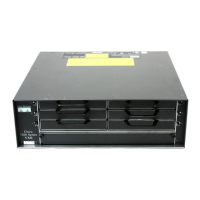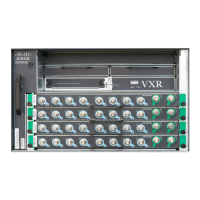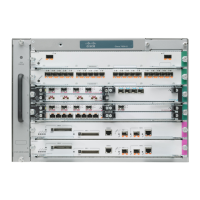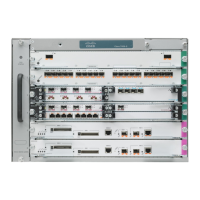Send document comments to nexus7k-docfeedback@cisco.com
6-13
Cisco Nexus 7000 Series NX-OS Interfaces Configuration Guide, Release 5.x
OL-23435-03
Chapter 6 Configuring Port Channels
Information About Port Channels
LACP Offload to Fabric Extenders
To reduce the load on the control plane of the Cisco Nexus 7000 Series device, Cisco NX-OS provides
the ability to offload link-level protocol processing to the Fabric Extender CPU. This is supported by
LACP by default as soon as there is at least one LACP port-channel configured on a fabric extender.
LACP Fast Timers
You can change the LACP timer rate to modify the duration of the LACP timeout. Use the lacp rate
command to set the rate at which LACP control packets are sent to an LACP-supported interface. You
can change the timeout rate from the default rate (30 seconds) to the fast rate (1 second). This command
is supported only on LACP-enabled interfaces. To configure the LACP fast time rate, see Configuring
the LACP Fast Timer Rate, page 6-34.
ISSU and stateful switchover cannot be guaranteed with LACP fast timers.
Virtualization Support
You must configure the member ports and other port channel-related configuration from the virtual
device context (VDC) that contains the port channel and member ports. You can use the numbers from
1 to 4096 in each VDC to number the port channels and you can reuse these port channel numbers in
different VDCs. For example, you can configure port channel 100 in VDC1 and also configure a different
port channel 100 in VDC2.
However, the LACP system ID is different for each VDC. For more information on LACP, see the “LACP
Overview” section on page 6-8.
Note See the Cisco Nexus 7000 Series NX-OS Virtual Device Context Configuration Guide, Release 5.x, for
complete information on VDCs and assigning resources.
All ports in one port channel must be in the same VDC. When you are using LACP, all possible 8 active
ports and all possible 8 standby ports must be in the same VDC. The port channels can originate in one
VDC (with all ports in that channel in the same VDC) and partner with a port channel in another VDC
(again, all ports in that channel must be in that VDC).
Note The port-channeling load-balancing mode works either for a single module or across the entire device.
You must configure load balancing using port channels in the default VDC. You cannot configure load
balancing using port channels within specified VDCs. See the “Load Balancing Using Port Channels”
section on page 6-6 for more information on load balancing.
High Availability
Port channels provide high availability by load balancing traffic across multiple ports. If a physical port
fails, the port channel is still operational if there is an active member in the port channel. You can bundle
ports from different modules and create a port channel that remains operational even if a module fails
because the settings are common across the module.
Port channels support stateful and stateless restarts. A stateful restart occurs on a supervisor switchover.
After the switchover, the Cisco NX-OS software applies the runtime configuration after the switchover.

